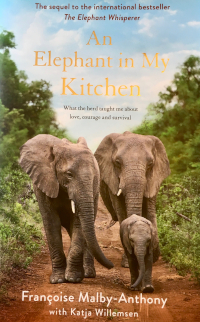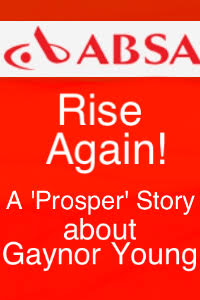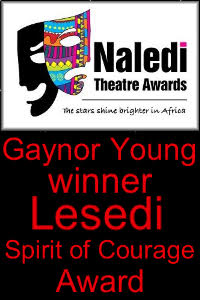 “Rhinos have an ancient, eternal beauty. With their massive bodies, clad in thick folds of prehistoric body armour topped by a magnificent scimitar horn, they fascinate like few other creatures………
“Rhinos have an ancient, eternal beauty. With their massive bodies, clad in thick folds of prehistoric body armour topped by a magnificent scimitar horn, they fascinate like few other creatures………
In death, there was no trace of that beauty. The regal horn viciously hacked off with honed machetes, left the noble face crumpled and desecrated. The eyes gazed vacantly. Pools of blood had congealed around the grotesquely disfigured head. Without it’s horn, the imposing creature looked as vulnerable as a baby.”
Lawrence Anthony
The rhinoceros is our twenty first century unicorn. And because of the unusual horn on it’s head, it is in danger of disappearing altogether. Is that how the unicorn became extinct? Too many people wanting it’s horn. If I wasn’t aware that the unicorn is a mythical beast, I would think that was the case!
 All five of the world’s diverse species of rhinoceros have been brought to the edge of extinction because of human appetite for their distinctive horns. The horns have been prized for centuries for their beautiful translucent colour when carved, and their supposed healing properties.
All five of the world’s diverse species of rhinoceros have been brought to the edge of extinction because of human appetite for their distinctive horns. The horns have been prized for centuries for their beautiful translucent colour when carved, and their supposed healing properties.
The current price of rhino horn is approximately $90,000 per kilogram, with an average horn weighing in at 3 kilograms. This makes rhino horn more valuable than platinum and gold combined. It is one of the most valuable commodities per kilogram on the planet! The scarcity of rhinos today only drives the price higher, and intensifies the pressure on the declining rhino populations. For people who are battling to feed their families, the opportunity to change one’s life by killing an animal that holds no value for them whatsoever must be overwhelming.
Poachers are now being supplied by international criminal gangs with sophisticated equipment to track and kill rhinos. Often they use a tranquilliser gun to bring the rhino down. They then hack off its horn leaving the rhino to wake up and bleed to death very painfully and slowly.
And why? What is it that makes this horn so valuable?
It is used in the traditional medicine systems of many Asian countries to “cure” a variety of ailments. The horn, which is shaved or ground into a powder and dissolved in boiling water, is used to treat fever, rheumatism, gout, and other disorders. According to the 16th century Chinese pharmacist Li Shi Chen, the horn could also cure snakebites, hallucinations, typhoid, headaches, carbuncles, vomiting, food poisoning, and “devil possession.” It is not, as commonly believed, prescribed as an aphrodisiac.
It has been proved that rhino horn doesn’t have any medicinal benefit whatsoever. It is a testimony to the power of tradition that millions of people believe that it does. Of course, if people want to believe in prayer, acupuncture or voodoo as a cure for what ails them, there is no reason why they shouldn’t. It is when animals are being killed to provide nostrum that have been shown to be useless, then there is a very good reason to curtail the use of rhino horn. Rhinos as we know them have been around for millions of years and it is heart-breaking to realise that the world’s rhinos are being eliminated from the face of the earth in the name of medications that don’t work.
A survey carried out by TRAFFIC in 2013 identified that the motivation for consumers buying rhino horn is the emotional benefits rather than medicinal. Rhino horn reaffirms their social status among their peers. Image and status is important to these consumers! They tend to be highly educated and successful people who have a powerful social network and no affinity to wildlife. Rhino horns are sometimes bought for the sole purpose of being gifted to others; to family members, business colleagues or people in positions of authority. It is a case of: Look what I’ve got!
 A baby rhino who watched poachers murder his mother for her horn has been unable to sleep alone since. The three-month old rhino was found on May 7, “crying inconsolably” and refusing to leave his dead mother’s side, according to staff at the Hoedspruit Endangered Species Centre in South Africa. Staff members ended up having to sedate the baby rhino, who they have named Gertjie, so they could transport him back to the animal centre. Gertjie remained so traumatised by his mother’s murder that he refused to sleep and staff members have taken to keeping him company at night. My heart cracks for all of these baby rhinos who are of no use to the poachers because their horn hasn’t grown yet. They have had their mothers killed in front of them and are left to die. This is where I so admire what has been set up by Francoise Anthony at Thula Thula.
A baby rhino who watched poachers murder his mother for her horn has been unable to sleep alone since. The three-month old rhino was found on May 7, “crying inconsolably” and refusing to leave his dead mother’s side, according to staff at the Hoedspruit Endangered Species Centre in South Africa. Staff members ended up having to sedate the baby rhino, who they have named Gertjie, so they could transport him back to the animal centre. Gertjie remained so traumatised by his mother’s murder that he refused to sleep and staff members have taken to keeping him company at night. My heart cracks for all of these baby rhinos who are of no use to the poachers because their horn hasn’t grown yet. They have had their mothers killed in front of them and are left to die. This is where I so admire what has been set up by Francoise Anthony at Thula Thula.
 Together with the Austrian animal welfare organisation “Vier Pfoten” (Four Paws) and the local neighbouring communities, the Thula Thula Rhino Orphanage is set to open in November 2014. It will offer refuge to baby rhinos that lose their mothers to poachers. The orphanage comprises a main house to accommodate the veterinary nurse volunteers and security guards, office and a meeting room for the local Zulu chiefs. There is a fully equipped clinic to treat and care for up to twenty injured or orphan rhinos and three bomas where the orphans will be able to walk around in total security. The rhino rooms will be equipped with webcams so that guests at Thula Thula’s two lodges will be able to observe the rhinos without disturbing them.
Together with the Austrian animal welfare organisation “Vier Pfoten” (Four Paws) and the local neighbouring communities, the Thula Thula Rhino Orphanage is set to open in November 2014. It will offer refuge to baby rhinos that lose their mothers to poachers. The orphanage comprises a main house to accommodate the veterinary nurse volunteers and security guards, office and a meeting room for the local Zulu chiefs. There is a fully equipped clinic to treat and care for up to twenty injured or orphan rhinos and three bomas where the orphans will be able to walk around in total security. The rhino rooms will be equipped with webcams so that guests at Thula Thula’s two lodges will be able to observe the rhinos without disturbing them.
It is devastating that there has to be such a thing as a rhino orphanage but ohhhh, what an unbelievable relief that such a place exists! I give so much thanks to Francoise and her staff. I also grieve over the fact that my young nieces and nephews will be unable to drive through a game reserve and see rhino grazing and leading their normal, unencumbered lives.
They will be very lucky to see a rhino at all.




















Just finished reading “the Elephant Whisperer”. What a wonderful couple, just could not put the book down!
Big smile – thank you, Romary!
Softly I kiss your eyes
Gaynor
Peter and I so enjoyed ‘The Elephant Whisperer’ which we read following your recommendation. Wonderful work Lawrence and Francoise are doing at Thula Thula. We salute them and you Gaynor, for enlightening the world of the many people who care for our wildlife. Thank you so much x
Comments are closed.